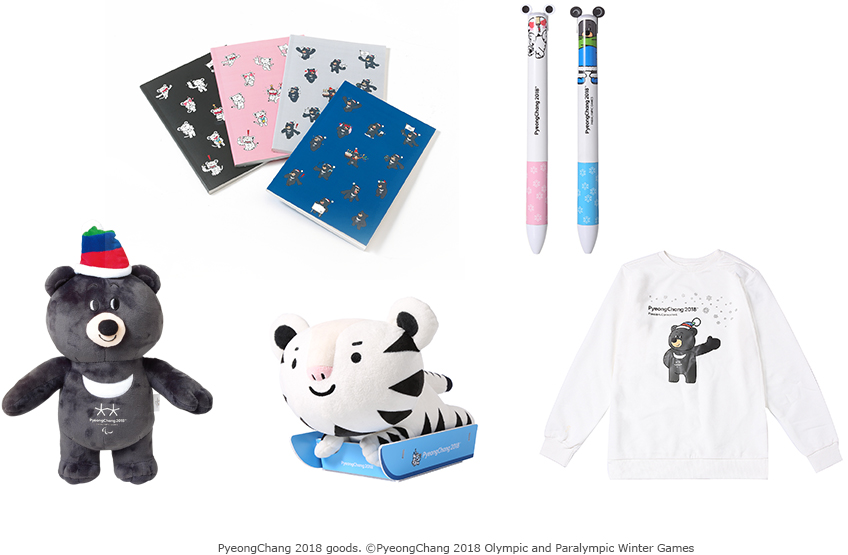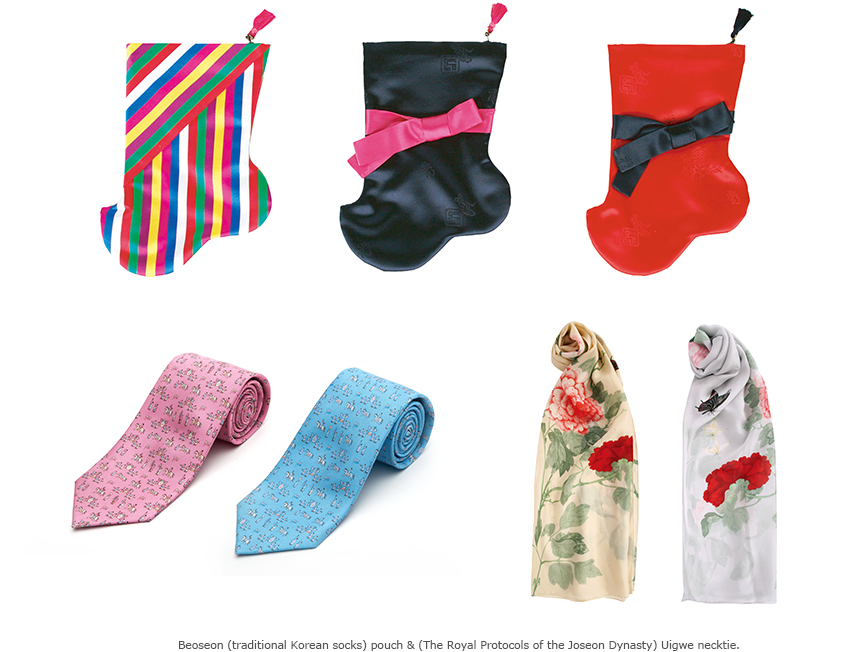

Goods,
well-designed things
Everyone has experience buying souvenirs at a tourist spot. After enjoying a film or a game, fans love to purchase action figures or T-shirts printed with a star’s face are really popular. All of them bring back warm, memorable moments. In Korea, these products are called “goods,” without any translation into Korean. Korea is currently in the grip of a “goods” wave as businesses are discovering that selling these “goods” guarantees business success.
Written by Lee Eun-yi , designer & writer
Photos courtesy of The National Museum of Korea, The Licensing Committee of the PyeongChang

Expanding Goods
The dictionary defines “goods” as things that are made to be sold. Originally, “goods” were only sold featuring pop stars or movie stars. In fact, the popularity of “goods” was influenced by the Japanese animation industry in the 1990s, as well as the influence of K-pop and the growing popularity of Korean pop music, TV shows and movies across East Asia and elsewhere, the so-called “Korean Wave,” or “Hallyu.” Due to the increasing popularity of so-called “idol goods,” shops were opened and businesses started to sell these promotional items. These days, we use the word “goods” in a variety of aspects. For example, we call products designed for national events, such as the PyeongChang 2018 Olympic and Paralympic Winter Games, as “national goods.” Products related to President Moon Jae-in are called “Innie goods.” Now, the word has permeated every aspect of modern youth culture.

Goods because they're good
“Goods” have always existed, but their variety and designs have grown over recent years. Things have changed now, with pop stars and movie stars becoming involved in the design process. There are whole ranges of “goods” now, including clothes, stationery, cosmetics and electronics. People tend to choose their favourite pop star or comic book character “goods” based on their perceived performance and design. Some people even criticize youths who buy “goods” just for fun, or criticize the marketing strategies targeting pop music fans saying that they're too tricky.
However, how can we explain the increasing popularity of pop culture “goods”? The National Museum of Korea has created many “national goods” based on real-life antiquities and exhibits. These “goods” are popular enough to sell out fairly quickly. The traditionally-themed memo pads, stationery sets, tote bags, key chains and umbrellas are all sensible “goods” and show many aspects of traditional Korean beauty and style.
That is the power of design: to make pop stars, emoji cartoons and famous scholars the main promotional aspects of this growing popularity for “goods” fever, going beyond time and genre. People know what is good. Do we spontaneously lose something in translation because it contains the word “goods”?

Other Articles


K-pop tomorrow

Sharing the Spotlight

Where Past Meets Present

para ice hockey player

well-designed things

Smart Technology, Services

Korea’s Take on Chicken


in Hong Kong
Application of subscription
Sign upThe event winners
Go


 March 2018
March 2018




